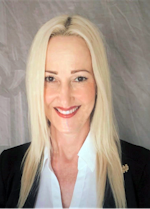The role of dental hygienists in achieving a state of oral health has always been essential. It is more important than ever to explore dental hygiene’s role in connecting patients’ oral health to their medical health. As hygienists, we must take a step forward in accepting our role as a frontline life-saving health-care provider. The proper care and interventions that hygienists provide are crucial to patients’ dental care, and now we must expand our role into the realm of patients’ physical health.
Where are we now?
At every dental appointment, we need to update the medical history and make any necessary changes. We must review the list of medications and ask about specific hospitalizations. Any new medications or new diagnosis might affect gingival health and change the way we treat someone’s oral health. We know cardiovascular disease, diabetes, and pregnancy can all have a strong influence on oral health, so being aware of these conditions is paramount.
Diabetic patients rely on us to help them maintain gingival health in order to keep A1C levels stable, and we know periodontal disease can lead to complications in pregnancy. Screening for high blood pressure should be done at every visit. According to the Centers for Disease Control and Prevention, 45% of adults in the United States have hypertension, which is defined as a systolic above 130 mm Hg and a diastolic above 80 mm Hg.1 Oral cancer screenings are another vital service that dental hygienists provide.
What’s on the horizon in the near future?
We are already seeing hygienists pioneer the next evolution of dental/medical synergy through a multitude of chairside tests. There are a number of salivary tests that should prove to become the standard of care. These offer a wealth of information to clinicians and show promise at predicting the probability of disease. These tests target specific bacteria that cause periodontal disease and caries. They also offer insight into the genetic predisposition of inflammation and can identify the human papillomavirus.
Additionally, we are now starting to see hygienists using oxygen sensors in their operatories. Once we know this information, we have the opportunity and responsibility to build relationships and collaborate with our patients’ medical providers. These communications can share our findings and open up conversations about other medical risk factors that can affect someone’s oral health. Once these relationships are established, we can have discussions about patients' medical test results, such as complete blood count (CBC) panel, C-reactive protein (CRP) test, hemoglobin A1C test results, and cholesterol.
With respect to future considerations, many exciting things are in motion. Several companies are offering chairside blood testing kits that can perform CPC panels, and they’re working on developing tests for CRP and A1C markers. The American Dental Association Health Policy Resources Center predicted that chairside screening would save the American health-care system approximately $102.6 million a year.2
We are already seeing the integration of medical records into our dental offices. Access to a patient’s medical records allows dental practitioners to discuss this information with patients and the correlation of their medical conditions to their oral health. Ideally, we will be able to share the results of our chairside blood tests with patients’ medical providers through these shared medical records systems. We’re starting to see dental and medical providers housing themselves under one roof. Having dental and medical providers together in one space offers an exciting opportunity for medical providers to refer patients for dental care and vice versa.
The goal in dental/medical synergy is to integrate dentistry into health care. The successful integration between dentistry and health care will be required in order to see a substantial increase in the number of patients receiving preventive dental care. According to the American Dental Association, 58% of surveyed Americans see a dentist only once a year.3
It’s alarming to note that the number of people visiting a dentist at least one time a year has dropped since 2016. This reduction does not consider the COVID-19 pandemic and the number of patients who have not returned to the office because of COVID-19 concerns. The successful implementation of dental/medical synergy will elevate patient outcomes and solidify our position as health-care leaders who are working to ensure that more patients see their dentists regularly.
The DSO Hygiene Excellence national organization has a mission to share the best dental hygiene practices within the DSO space. Join us in this mission to share the best of what dental hygiene can be for our patients and the profession. We know we are better together and sharing the best practices makes us all better.
Take this opportunity to sign up for a free membership to the DSO Hygiene Excellence national organization at dsohygieneexcellence.com/membership. As part of that membership, you will receive the latest information on clinical practice and the opportunity to participate in the networking and learning opportunities offered by DSO Hygiene Excellence.
We’re looking forward to sharing our final pillars, clinical and business excellence, in part four of this series in RDH magazine.
References
1. Facts about hypertension. CDC. https://www.cdc.gov/bloodpressure/facts.htm#:~:text
2. Chairside medical screenings could save $102 million a year. ADA. March 3, 2014. https://www.ada.org/en/publications/ada-news/2014-archive/march/chairside-medical-screenings-could-save-$102-milli
3. Survey: More Americans want to visit the dentist. ADA. March 21, 2018. https://www.ada.org/en/publications/ada-news/2018-archive/march/survey-more-americans-want-to-visit-the-dentist#:~:text
CHRISTINE DIEHL, BGS, RDH, has been practicing clinical dental hygiene for 28 years and currently works full-time in a DSO: DecisionOne Dental Partners. She graduated from Parkland College with her AASDH and received a BGS from Northern Illinois University. Over her career, she has attended a multitude of continuing education, including LVI for Advanced Dental Studies, and received an associate fellowship from the World Clinical Laser Institute. Diehl is a cofounder of DSO Hygiene Excellence.
SARAH VARNEY, BSDH, RDH, has worked as a hygienist with Kendall Pointe Dental, a DSO office, since 1988. Varney is currently a graduate student at the University of Notre Dame in the EMBA program and received her AASDH from Parkland College and a BSDH honors degree with an Irene Newman Award from Fones School of Dental Hygiene. Certifications include soft tissue laser and advanced periodontal coach. Varney is the founder of CE2 and cofounder and CEO of DSO Hygiene Excellence.








